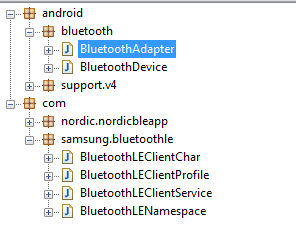I found a nice Simple Android application you can use to test your hardware or just evaluate TI sample apps advertisment parameters.
1. Use CC2540 for Packet Sniffing from the Mini Kit
2. Download the Bluetooth Smart Scanner from Google Play : https://play.google.com/store/apps/details?id=com.semilink.smartscanner&feature=search_result
3. Try to adjust the parameters, and test again.
I programmed our Keyfob with for example the Bloodpressure sensor, and tested it out.
However, now it is time to write our own Samsung S3 Android BLE App.
Enjoy,
LPRF Rocks the World


